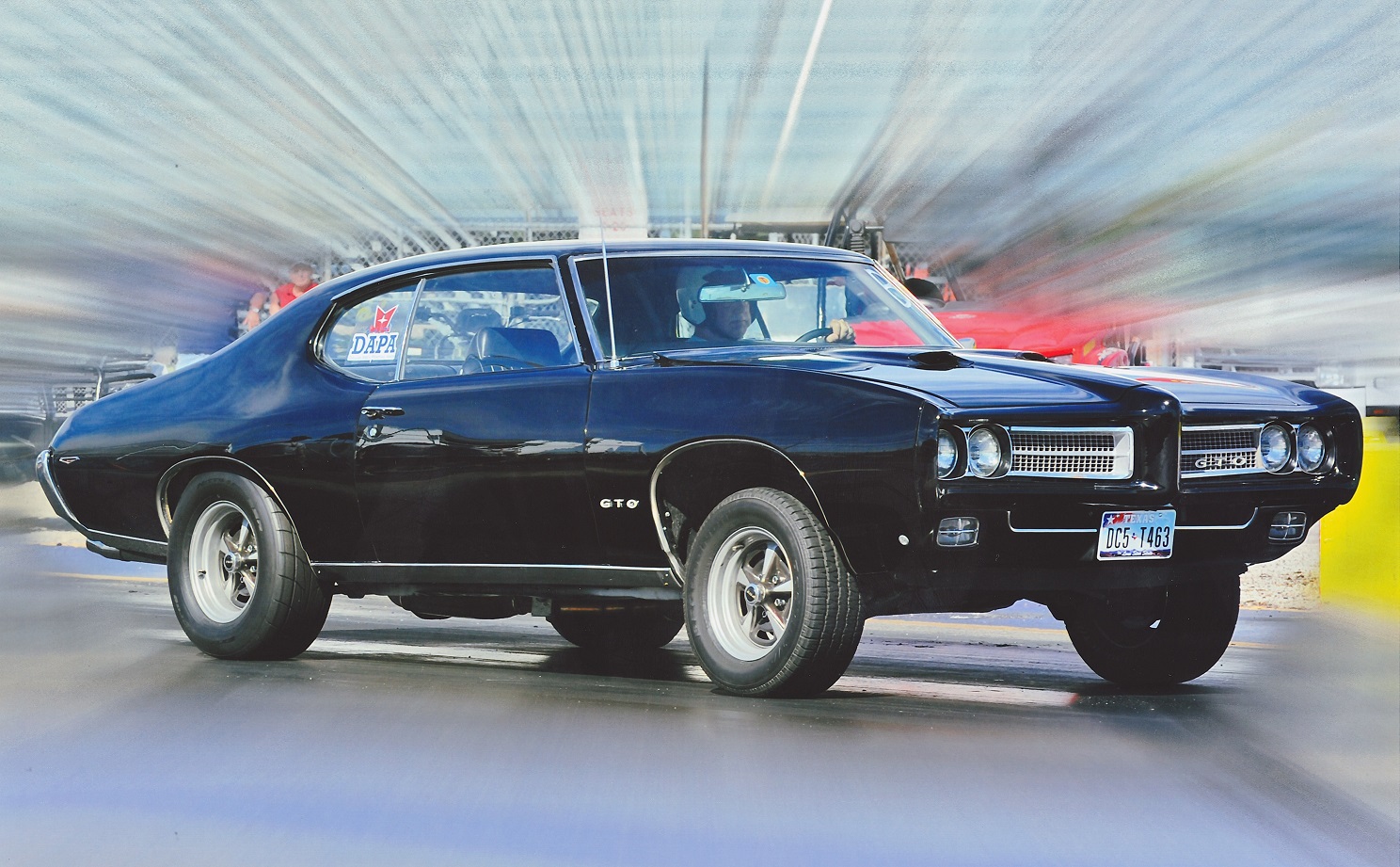Building a Strong Street Machine – Part 11: Cooling Systems
- March 16th, 2010
- Posted in Jim Hand: Building A Strong Street Machine . Technical Articles
- By D.A.P.A
- Write comment
A cooling system consists of: The radiator, radiator cap, overflow tank, water pump, thermostat, fan assembly, fan shroud, hoses and the coolant. (The water passages inside the engine block technically are part of the system, but other than cleaning them during an engine overhaul, there is no practical method of changing their operation.)
The radiator’s main function is to transfer the heat generated in the engine to the surrounding atmosphere. It contains a large quantity of small water passage tubes and interconnecting fins, and as hot water passes through the tubes, some of the heat is radiated into the air passing between the tubes. A secondary purpose of the radiator is to provide storage for the needed volume of water required to cool the engine in question. The radiator cap on a system without an overflow tank has two purposes: To keep the water from spilling out, and to increase the atmospheric pressure within the cooling system. You will recall that water boils at a temperature of 212 degrees at sea level, but as the pressure decreases, water boils at a lower temperature. Conversely, when pressure is increased, the water will boil at a higher pressure. Thus, we have caps rated at various pressures; 15# with most factory systems, (245 degree boiling point) but lower pressure caps are available. When/if the pressure inside the system exceeds the rated cap pressure, a sprint inside the cap releases and lets water flow out. If an overflow/recovery system is used, the cap has an additional function. After water has flowed from the radiator to the recovery tank, the temperature inside the engine cools, the pressure drops and tends to suck the overflow water back into the engine. The cap will allow the reverse flow back into the engine. Thus, the engine cooling system will remain full of coolant, rather than a combination of air and coolant, which improves overall cooling.
The water pump moves the water from the engine to the thermostat assembly. If the thermostat is open, the water passes through the radiator and back into the engine. Whether the thermostat is open or closed, the pump also circulates water through the heater core and back into the engine.
The thermostat is a temperature sensitive switch that controls the flow of water to the radiator. It’s only function is to allow coolant to pass through when the coolant temperature equals or exceeds it’s rated temperature, and to stop coolant flow if the temperature is below the rated level. The thermostat controls only the minimum system temperature! If the system is operating normally and is adequate for the engine in question, the coolant temperature will remain in the general range of the thermostat rating. However, switching to lower temperature thermostats will not improve system cooling, but simply transfers coolant to the radiator at a lower temperature. If the system is marginal or inadequate, the coolant temperature will increase regardless of the thermostat rating.
The fan assembly is designed to move air through the radiator during stops or low speed operation. After a speed of approximately 30 mph is reached, the fan has little effect on the system cooling. The fan shroud, when properly located, insures that all air generated by the fan assembly actually passes through the radiator.

